In ancient Greek art and modern garden design, goddess statues represent the perfect union of divine beauty and earthly grace. These magnificent sculptures not only serve as stunning garden focal points but also carry deep mythological significance and cultural value. In this article, we’ll explore ten of the most renowned Greek goddess statues and how they can transform your garden into a classical paradise, each bringing its unique charm and historical significance to your outdoor space.
1.Venus de Milo (Aphrodite)
The Venus de Milo is perhaps the most recognized classical sculpture in history, created between 130-100 BCE. This masterpiece represents Aphrodite, the goddess of love and beauty, in her most iconic form.
The statue’s most striking feature is its armless form, which adds to its mystique rather than diminishing its beauty. The sculptor’s mastery is evident in the natural flow of drapery and the subtle contrapposto pose that creates a sense of movement. Modern reproductions typically stand 4-6 feet tall for garden placement, making them ideal focal points for formal rose gardens or classical courtyards.
Design consideration: Position this statue as a centerpiece surrounded by white roses and lavender, creating a sensory experience that combines visual beauty with fragrant elements. The statue’s classical proportions work best when given adequate viewing space from multiple angles.
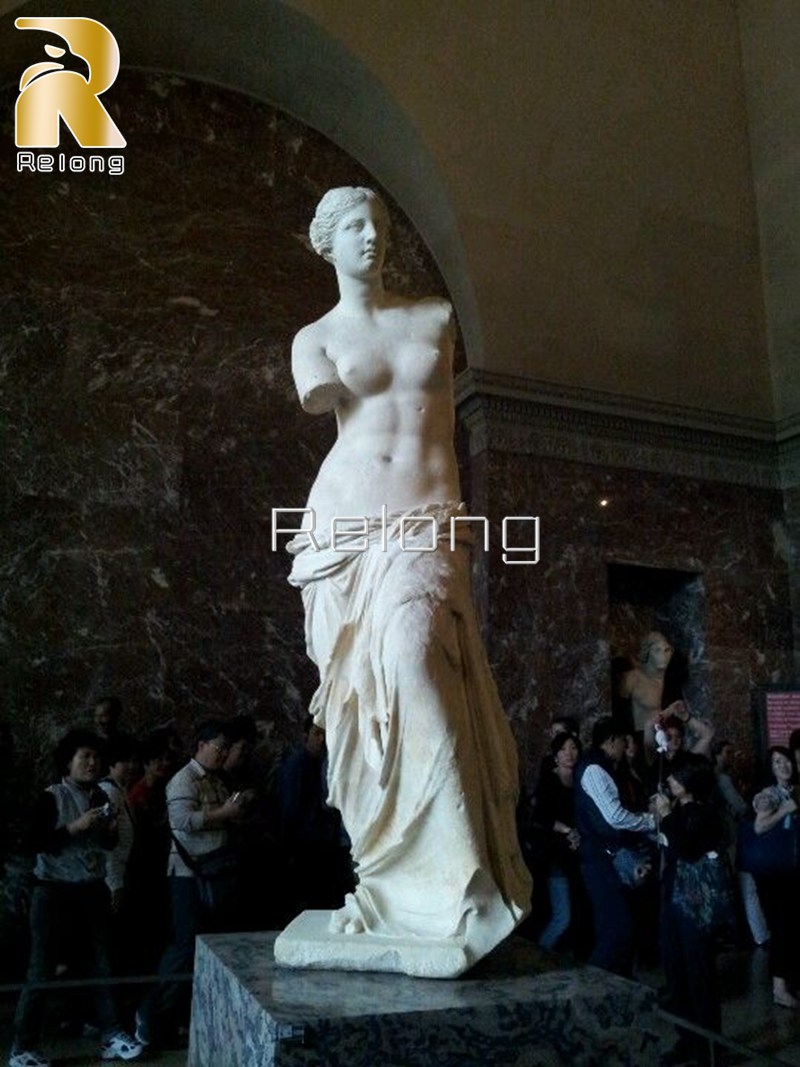
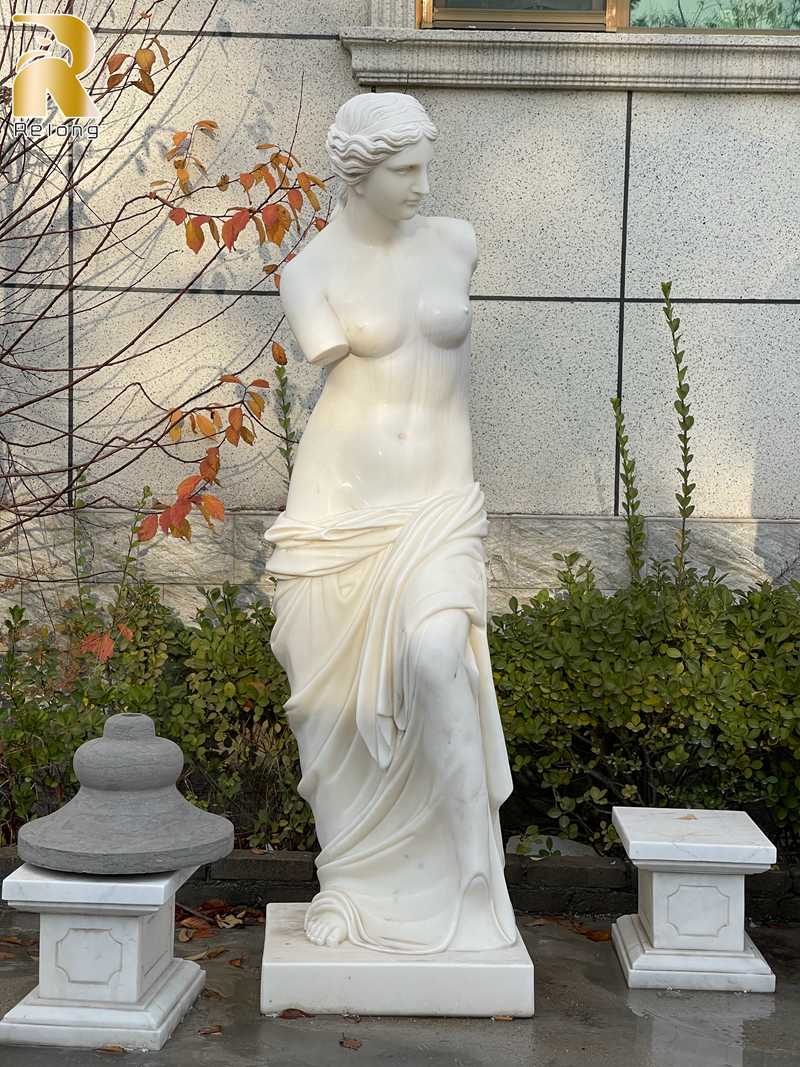
hand carved Venus de Milo sculpture replica
2. Aphrodite of Knidos
Created by Praxiteles in the 4th century BCE, the Aphrodite of Knidos revolutionized ancient Greek art as the first life-size female nude. This groundbreaking sculpture represents a pivotal moment in art history, depicting the goddess in a natural, human form.
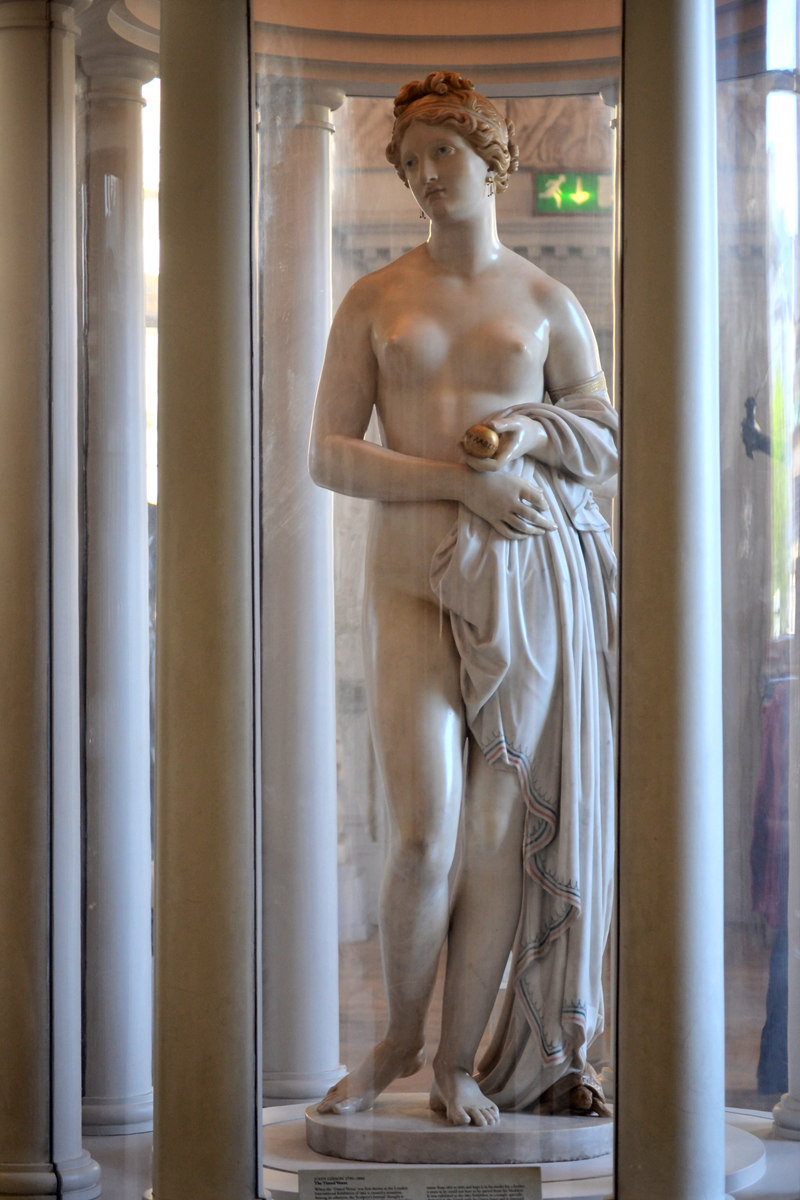
The statue portrays Aphrodite at her bath, with one hand modestly covering herself while the other holds her drapery. This intimate moment creates a perfect theme for garden water features or private meditation spaces. Modern interpretations often incorporate fountain elements, making it ideal for courtyard settings.
Placement tip: Create a secluded grotto-like setting with evergreen hedges and flowing water, allowing the statue to emerge as a surprise element in your garden journey.
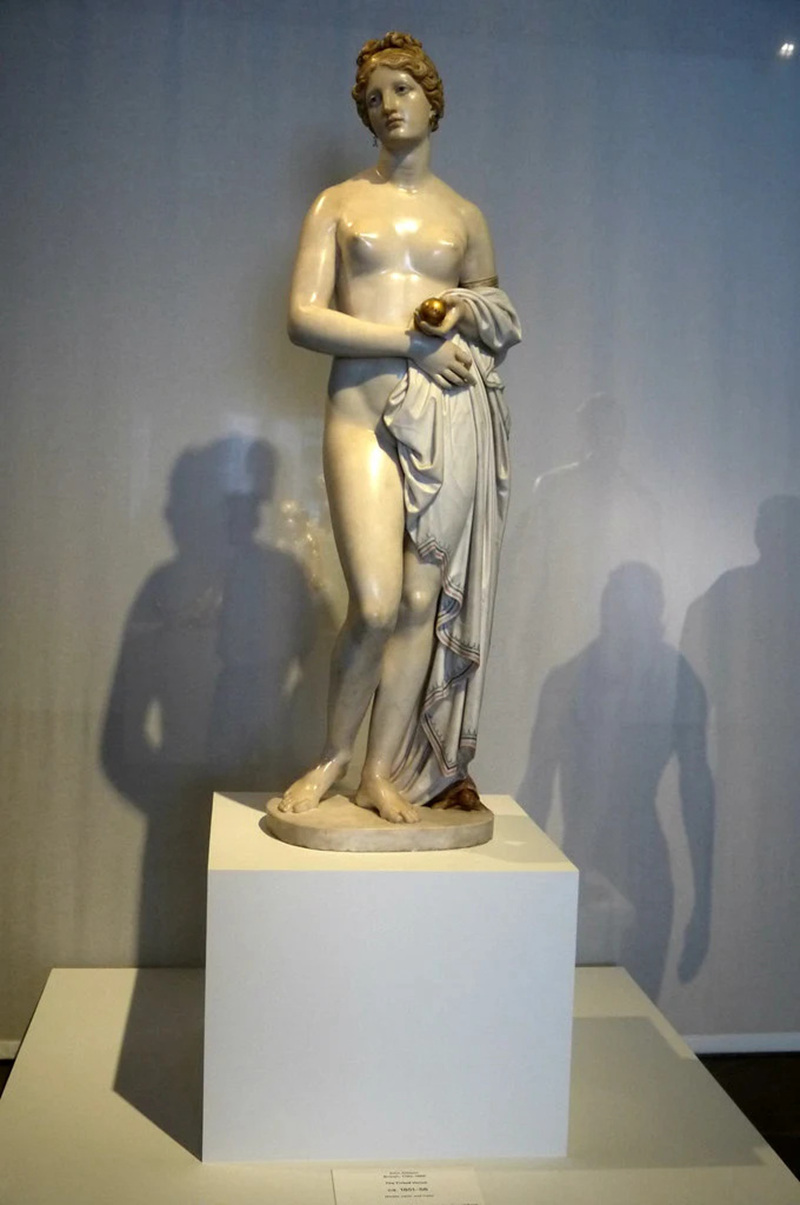
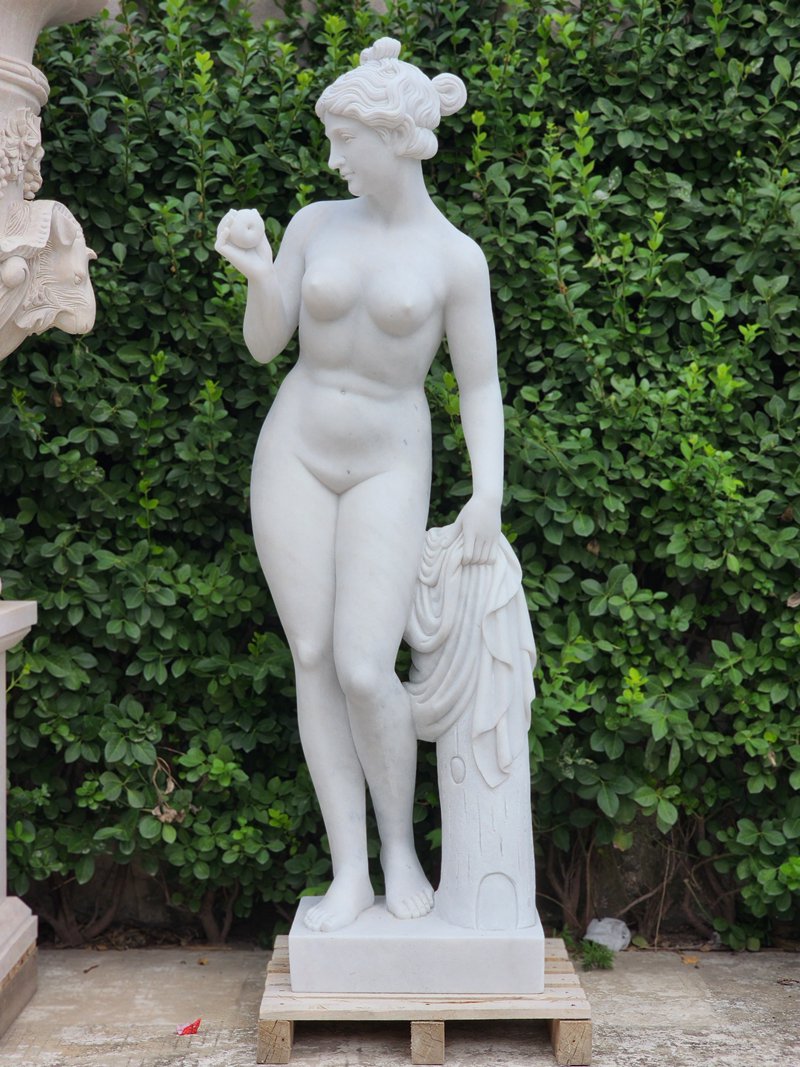
(If you are interested in the replica of Aphrodite of Knidos sculpture, please feel free to contact us)
3. Winged Victory of Samothrace (Nike)
The Winged Victory, created around 200-190 BCE, captures a moment of intense dramatic action. Despite its headless state, this masterpiece conveys powerful forward momentum through its windswept drapery and dramatic wing positioning.
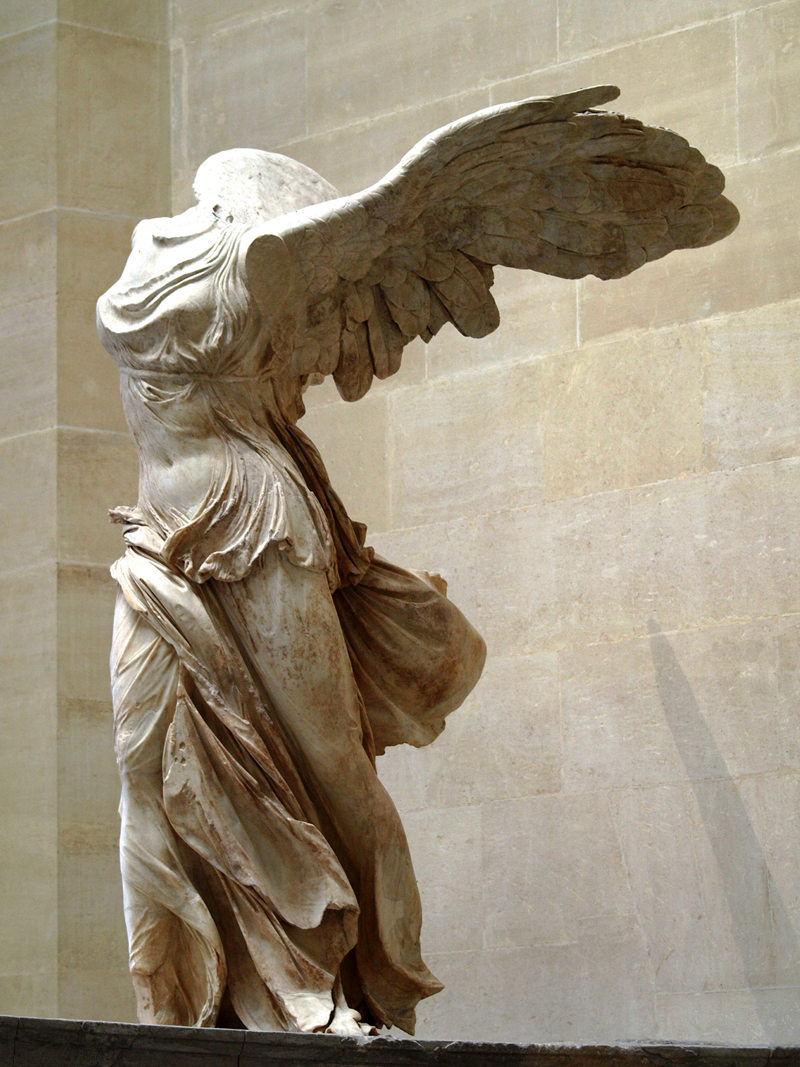
The original statue, standing approximately 8 feet tall, was designed to appear as if just alighting. Garden versions, typically scaled to 5-6 feet, maintain this dynamic quality while being more appropriate for residential spaces. The forward motion makes it particularly effective when positioned at the end of long garden vistas.
Installation strategy: Place on elevated ground or atop garden steps, surrounded by tall ornamental grasses that move with the wind, enhancing the sense of motion.
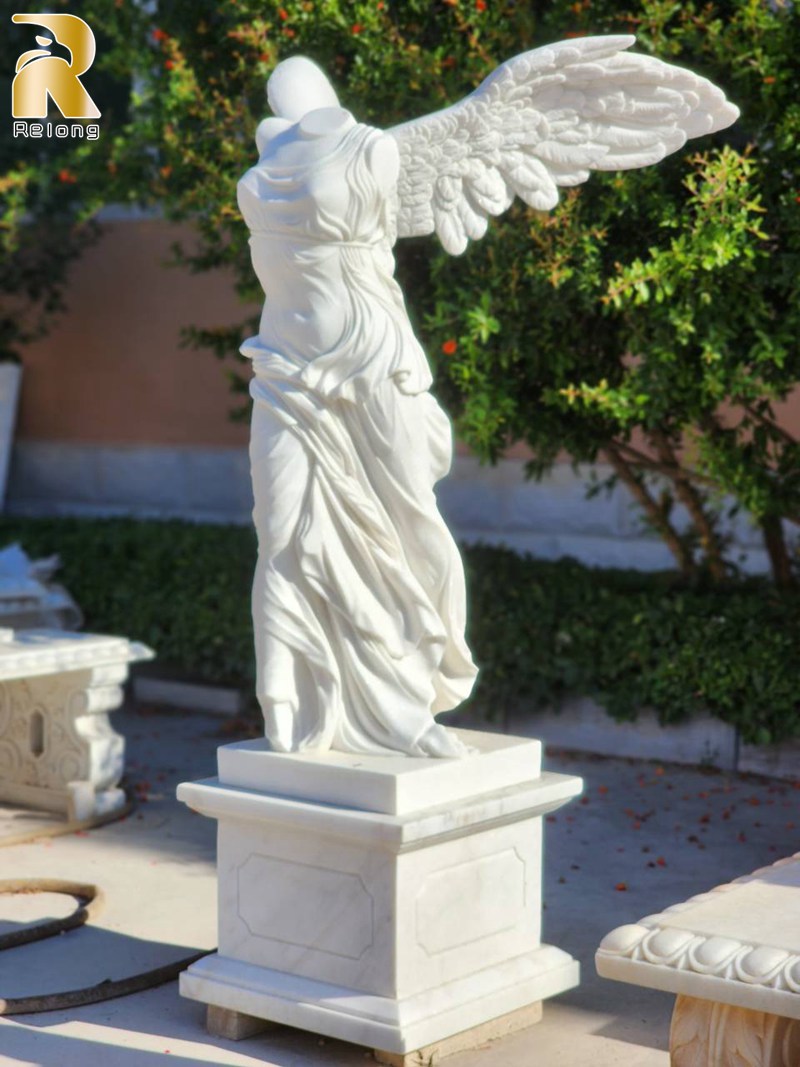
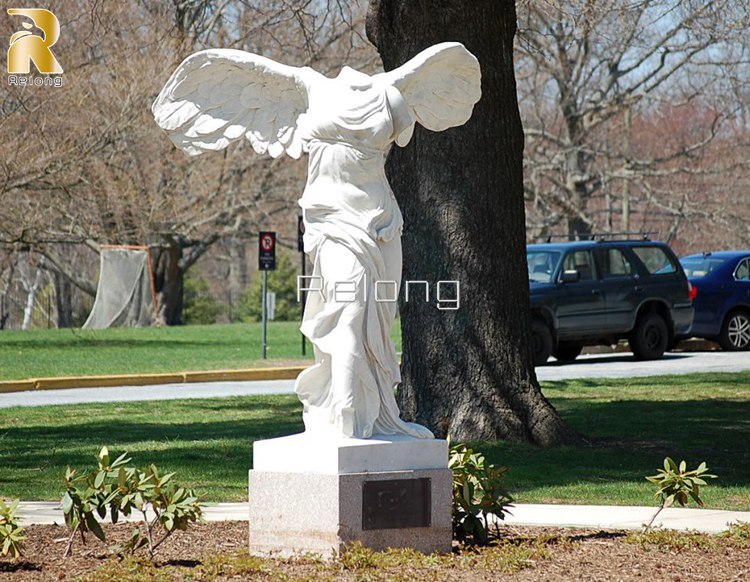
4. Artemis the Huntress Statue
The Diana of Versailles represents Artemis, the goddess of the hunt, in dynamic motion. This Roman copy of a Greek original captures the goddess in mid-stride, reaching for an arrow from her quiver, accompanied by a stag.
The statue’s flowing movement and natural themes make it perfect for woodland gardens or naturalistic settings. Modern reproductions, typically 4-5 feet tall, maintain the original’s sense of motion while offering durability for outdoor placement.
Landscape integration: Surround with native ferns and woodland plants, creating natural pathways that seem to follow the goddess’s hunt.
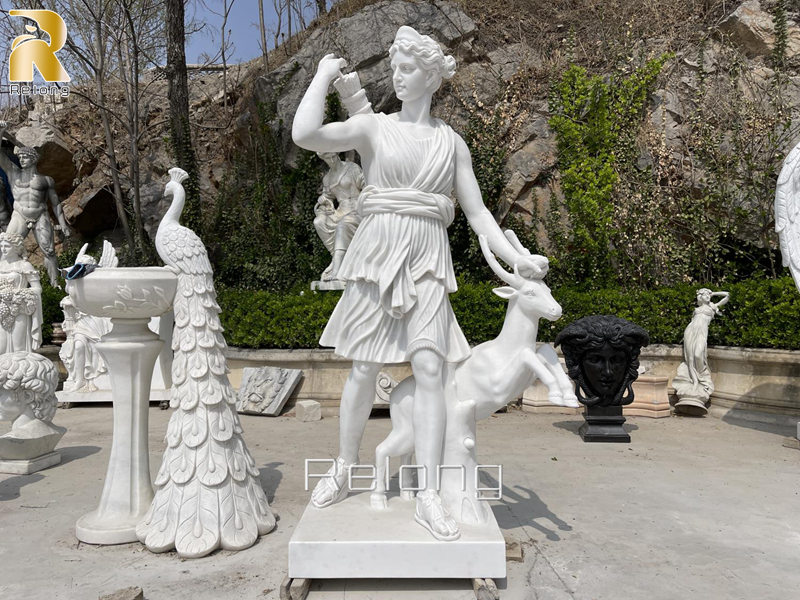
5. Hebe Statue
Hebe, cupbearer to the gods and goddess of youth, is portrayed in classical sculpture with her characteristic cup and pitcher. This representation of eternal youth and renewal makes her perfect for garden spaces dedicated to springtime and new beginnings.
Garden versions often incorporate these vessels as working fountain elements, adding both visual and auditory appeal. The recommended height of 3-4 feet makes these pieces perfect for intimate garden spaces or near seating areas.
Water feature tip: Design a small reflection pool around the base, with the sound of trickling water enhancing the peaceful atmosphere.
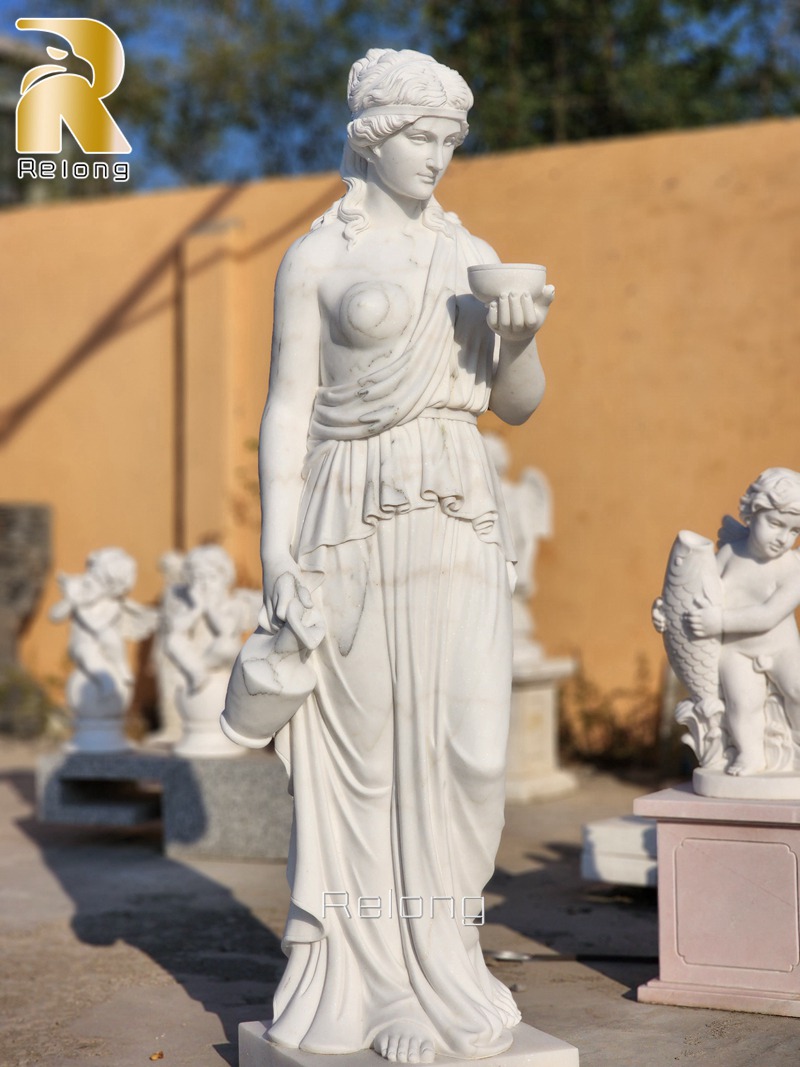
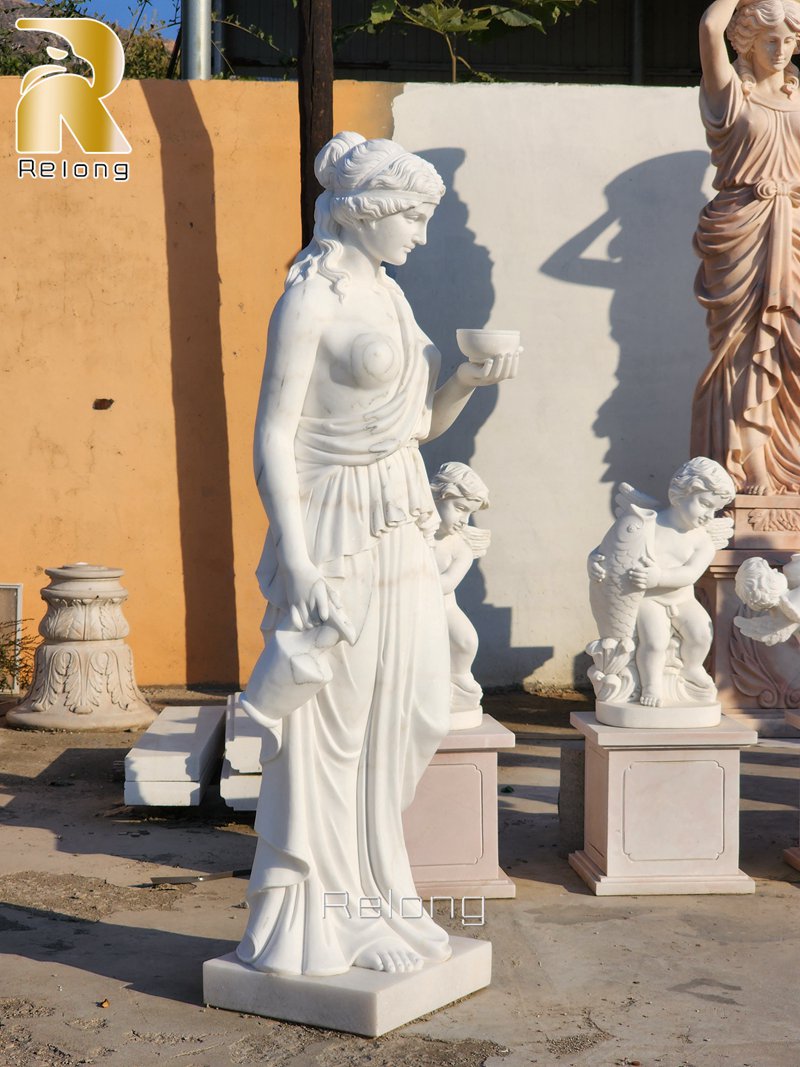
6. Aphrodite with Urn
This variation of Aphrodite sculptures incorporates water elements, making it particularly suitable for garden settings. The goddess is typically shown in a graceful pose, pouring water from an urn or vessel.
Contemporary versions often feature functioning water elements, creating soothing fountain features. The combination of classical beauty and practical water features makes these pieces especially valuable in garden design.
Integration strategy: Create a dedicated water garden with aquatic plants and stepping stones, using the statue as both a focal point and water source.
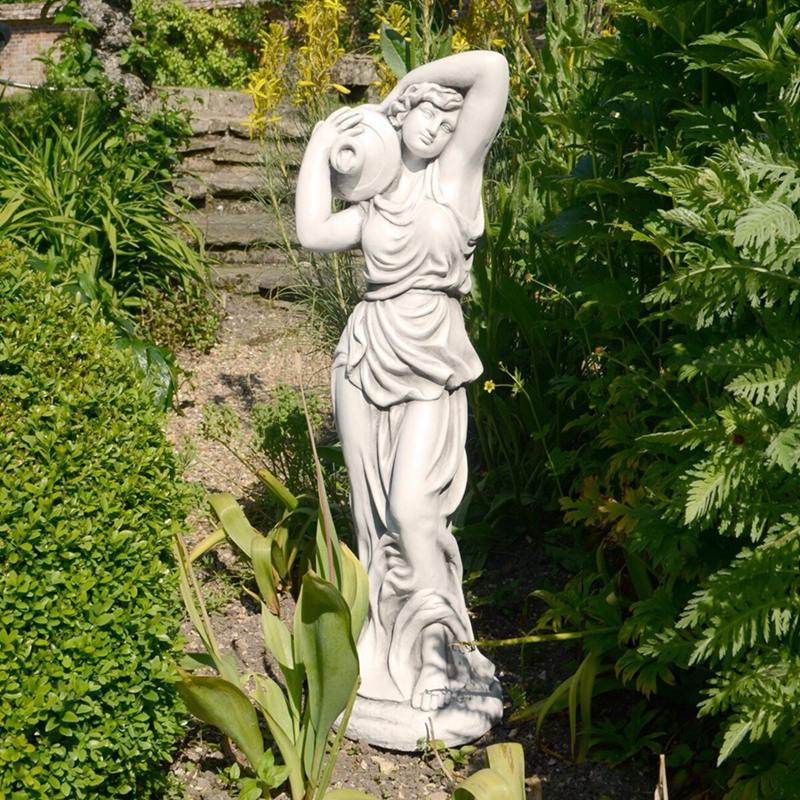
7. Persephone Statue
Persephone, queen of the underworld and goddess of spring growth, represents the cycle of seasons. Her dual nature – both underworld queen and bringer of spring – makes her perfect for gardens that celebrate seasonal changes.
Garden versions often emphasize her emergence from the underworld, surrounded by spring flowers. The recommended height of 4-5 feet allows for dramatic seasonal planting displays at the base.
Seasonal planning: Design different planting schemes for each season, emphasizing spring bulbs and summer flowers, transitioning to architectural seed heads and winter interest plants.
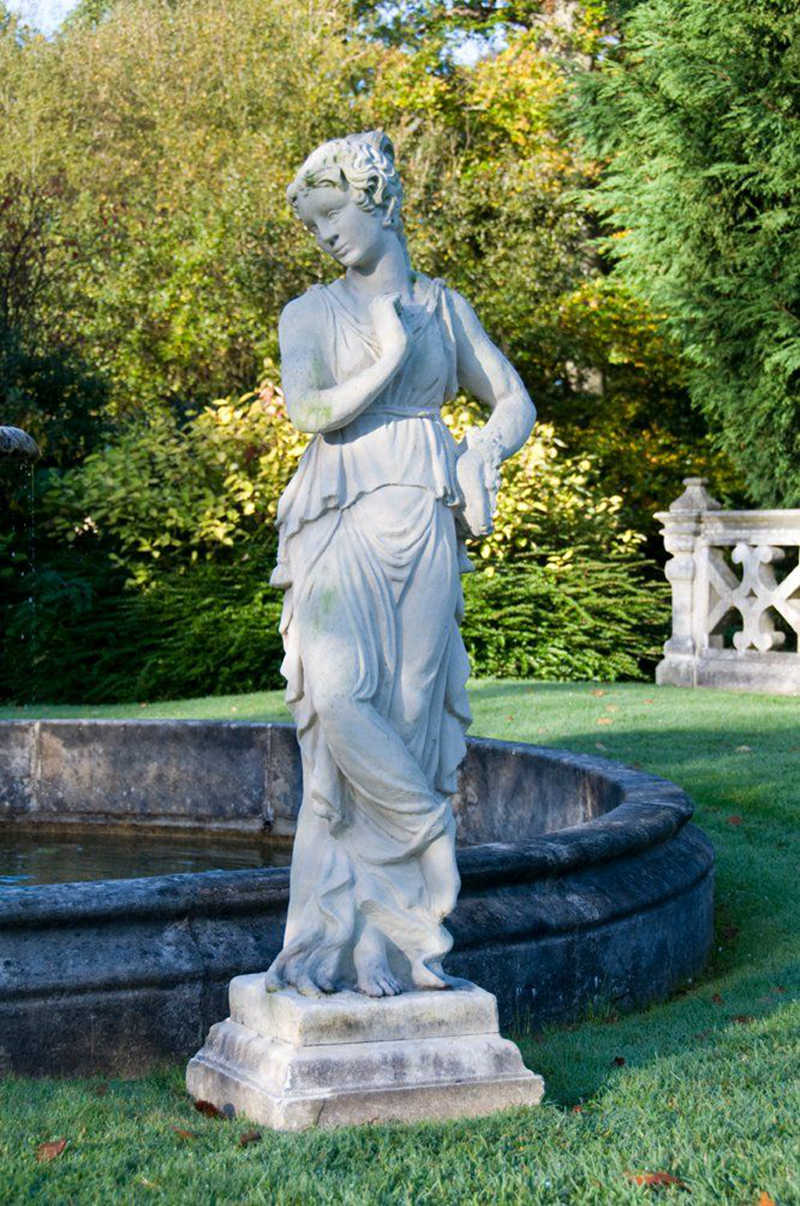
8. Artemis with Bow
This dynamic representation of Artemis shows the goddess in her role as a divine huntress, bow drawn and ready. The statue captures both power and grace, making it perfect for larger garden spaces.
Modern interpretations maintain the dramatic pose while ensuring stability and durability. The recommended height of 5-6 feet creates an impressive presence in the landscape.
Position strategy: Place along main sight lines where the directional quality of the bow can guide views through the garden.
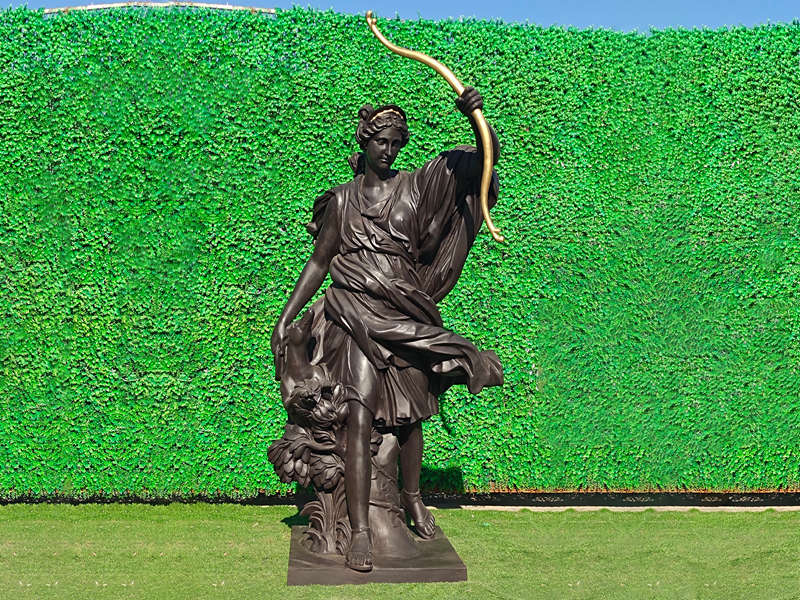
9. Three Graces
The Three Graces represents the three goddesses of grace, Aglaea (splendor), Euphrosyne (joy) and Thalia (prosperity). The most famous version of this group of sculptures is the Roman marble replica in the Louvre, the original can be traced back to the Greek period.
Artistic features:
The three goddesses lean on each other in a graceful dance posture
The exquisite composition shows a perfect sense of balance and rhythm
The soft body curves and smooth fabric folds
The expressions of the three goddesses are gentle and sweet, showing the beauty of harmony
Garden application suggestions:
Placement:
Suitable for placing in a private garden corner.
It can be used as the focus of a fountain or waterscape.
It is recommended that a semicircular space be created around the sculpture.
It is recommended to choose a ratio of 4-5 feet high
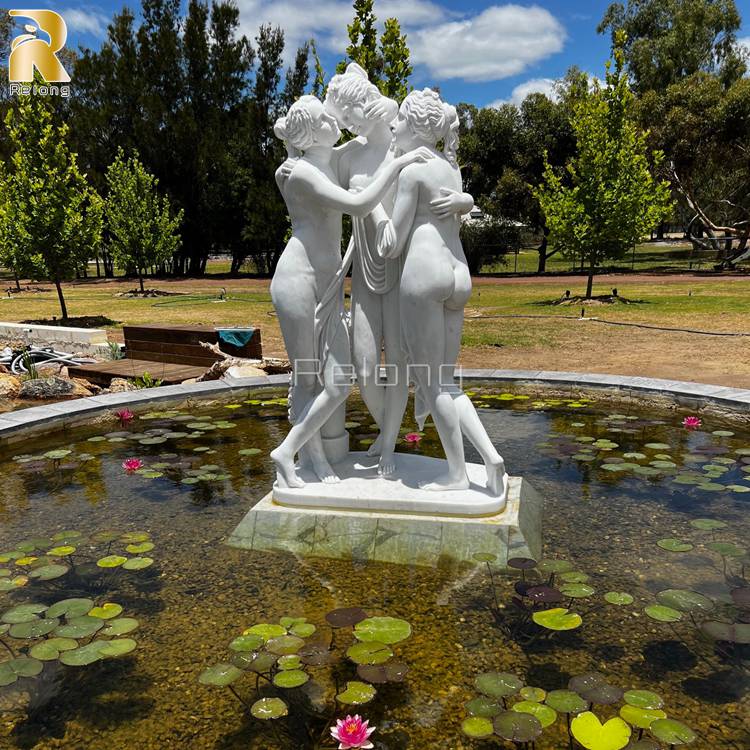
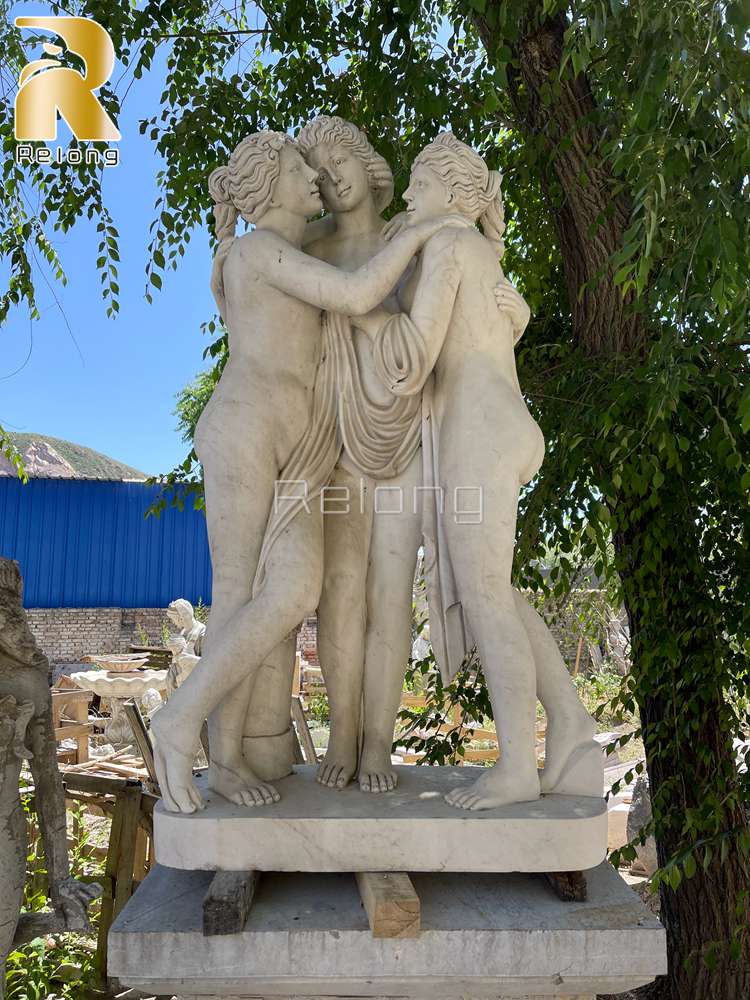
10. Flora Goddess Statue
While technically Roman, Flora’s Greek equivalent (Chloris) has inspired some of the most garden-appropriate classical statues. These pieces typically depict her with flowing robes adorned with flowering motifs, making them particularly suitable for flower gardens.
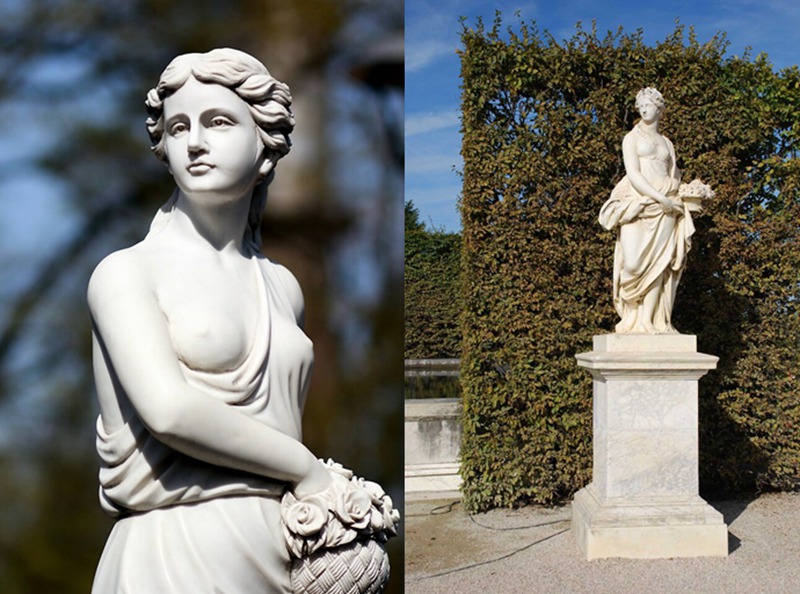
Practical Considerations for Garden Goddess Statues:
Material Selection: Choose weather-resistant materials appropriate for your climate
Scale Consideration: Select sizes that complement rather than overwhelm your garden
Installation Requirements: Ensure proper foundations and drainage
Maintenance Needs: Consider seasonal cleaning and protection requirements
Lighting Integration: Plan for natural and artificial lighting effects
These ten goddess statues offer more than mere decoration – they create narrative spaces within your garden that change with light, seasons, and viewing angles. When selecting and placing these pieces, consider both their mythological significance and practical garden functions. Remember that the most successful garden statuary becomes part of the living landscape, enhancing rather than dominating the natural elements around it.
Your garden can become a personal Olympus, where these divine figures interact with natural elements to create spaces of beauty, contemplation, and classical inspiration. Whether you choose one statement piece or create a mythological journey through your landscape, these goddess statues offer timeless elegance and practical garden functionality.

